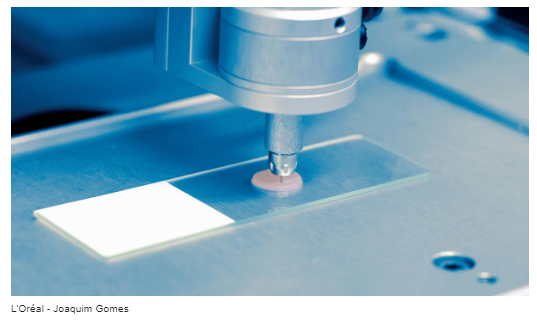
Bioprinted skin that can actually ‘feel’
KEY POINTS
-
-
- At the Viva Technology conference in Paris, L’Oreal showed off demonstrations of “bioprinting,” technology that can 3D print humanlike skin, in action.
- The firm has been using this tech for several years to test new makeups on synthetic skin in its lab rather than animals.
- L’Oreal says it is also working with startups and research institutions to develop bioprinted skin that can actually “feel.”
-
More and more, beauty companies are offering innovative makeup and skin care products. L’Oréal, however, is taking its efforts to another level by creating a new skin. Yep, you read that right. At the Viva Tech conference in Paris last month, the cosmetics giant revealed that it’s developing a synthetic skin that has the ability to “feel” like real human skin — but is actually 3D-printed.
In a press release, the brand, which teamed up with researchers at the University of Oregon, explained the invention emulates the diversity of real skin, and can show certain conditions (like eczema and acne) as well as injury healing and tanning. They plan to incorporate sensors that will allow the material to provide feedback, mimicking how humans feel. So aside from offering a route for improved and more ethical product testing, the synthetic skin could incite “transformative changes” for studying wound and burn healing.
“There are so many diseases and injuries in the world that aren’t being solved, so having an extra tool to try to tackle these is really valuable,” researcher Paul Dalton, who invented the 3D-printing technique that makes the synthetic skin possible, said in a statement. Guive Balooch, head of L’Oréal’s tech incubator, added to CNBC: “This is going to be a revolution.”
